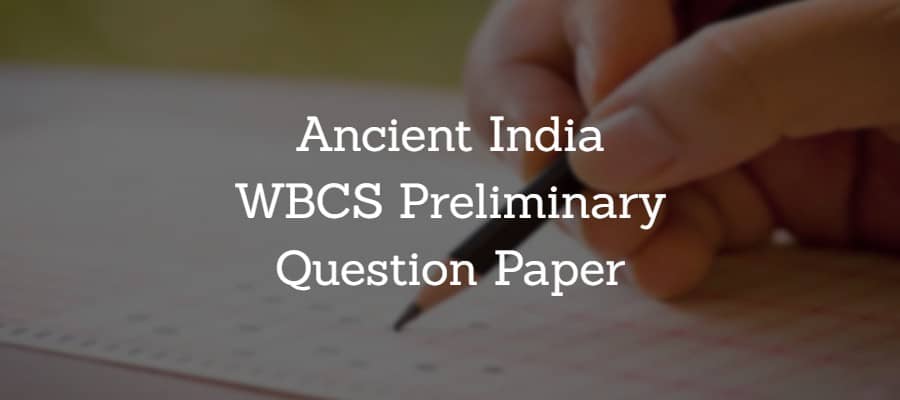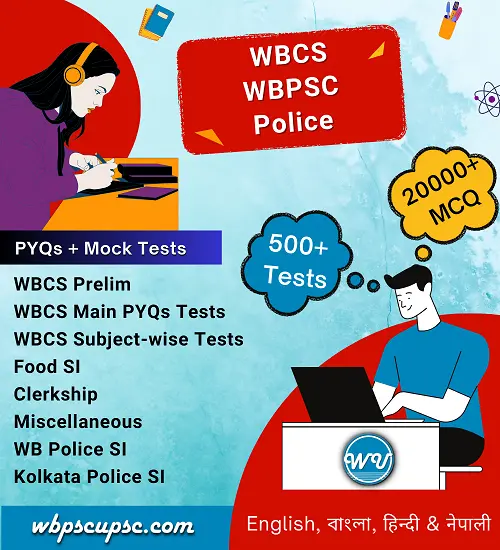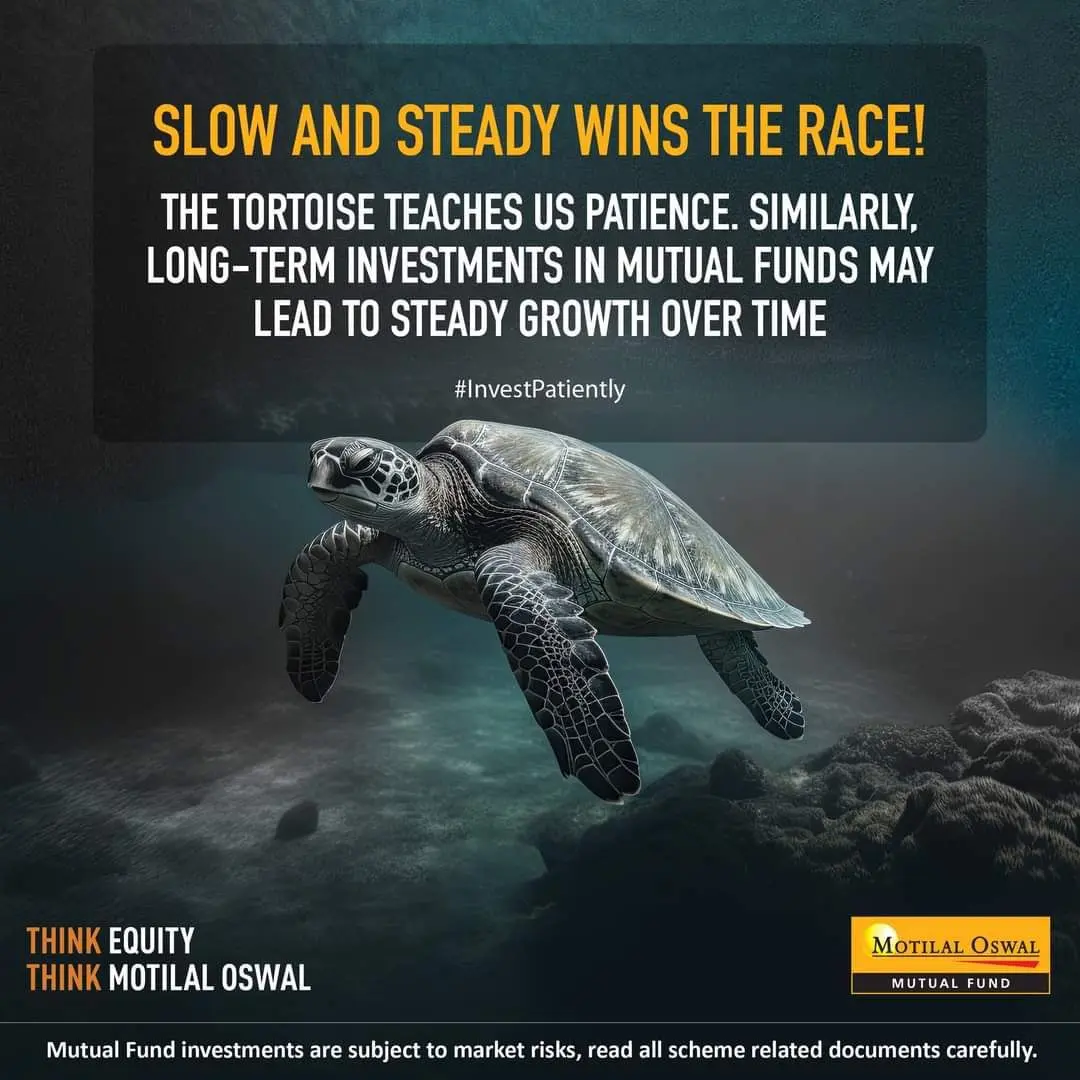WBCS Preliminary Question Paper – 2023
28. Name the king whose achievements were described in Nanaghat inscription.
(A) Satakarni I
(B) Gautamiputra Satakarni
(C) Vashishta Putra Pulamayi
(D) Yajnasri Satakarni
34. Who was the first historical emperor of India?
(A) Dhanananda
(B) Chandragupta Mourya
(C) Bimbisara
(D) Bindusara
63. Name the Chalukya king who defeated Harshavardana.
(A) Pulakeshin I
(B) Pulakeshin II
(C) Mangalesh
(D) Kirtivarmana
80. Which state among the ‘Sixteen Mahajanapadas‘ was successful ultimately in founding an empire?
(A) Koshala
(B) Kashi
(C) Magadha
(D) Panchala
89. Name the Chola king who adopted the title of ‘Gangoikonda’.
(A) Rajendra Chola l
(B) Rajraj I
(C) Rajadhiraj Chola
(D) Rajendra Chola II
92. Who wrote ‘Kumarasambhavam‘ ?
(A) Vishnusharma
(B) Dandin
(C) Kalidasa
(D) Somedeb
98. Where did Chandragupta II establish his second capital?
(A) Bidisha
(B) Malava
(C) Valabhi
(D) Ujjayni
107. Who was Mihirkula/Mihirgula?
(A) Saka king
(B) Kushana king
(C) Huna king
(D) Pahlava king
131. Where was the first Buddhist Council held?
(A) Vaisali
(B) Pataliputra
(C) Rajagriha
(D) Malava
177. Where was the capital of Kanishka?
(A) Purushpur
(B) Jalandhar
(C) Kashmir
(D) Pataliputra
180. Under the rule of which emperor Nalanda University was founded?
(5th century)
(A) Samudragupta
(B) Chandragupta II
(C) Skandagupta
(D) Kumaragupta I
WBCS Preliminary Question Paper – 2022
- Who is the composer of Allahabad Prasasti?
(A) Harishena
(B) Bishakhdutta
(C) Kalidasa
(D) Shudrak
- Earliest fossil remains of archaic Homo sapiens has been found in
(1982, Arun Sonakia)
(A) Siwalik hills
(B) Narmada valley
(C) Nallamalai hills
(D) Chotanagpur Plateau
- Arrange the list of foreign travellers in chronological order:
(a) Xuanzang (Hieun Tsang )
(b) Itsing
(c) Fa Tsien
(d) Megasthenes
(A) (a), (b), (c), (d)
(B) (a), (d), (b), (c)
(C) (d), (c), (a), (b)
(D) (d), (c), (b), (a)
- Match the following:
(a) Kot Diji 1. Luigi Pio Tessitori
(b) Harappa 2. F.A. Khan, G.S. Ghurye
(c) Kalibangan 3. Daya Ram Sahani
(d) Mohenjodaro 4. Rakhal Das Bandyopadhyay
(A) (a-2), (b-3), (c-1), (d-4)
(B) (a – 1), (b-3), (c-2), (d-4)
(C) (a-4), (b-1), (c-2), (d-3)
(D) (a-3), (b-2), (c-4), (d-1)
- Who among the following stated that there was no slavery in India?
(A) Strabo
(B) Ptolemy
(C) Megasthenes
(D) Xuanzang (Hieun Tsang )
- In which of the following inscriptions we find earliest reference to ‘Sati’?
(Sagar district of Madhya Pradesh)
(A) Asokan inscription of Girnar
(B) Aihole inscription
(C) Eran inscription
(D) Damodarpur inscription
- The Gupta King who destroyed Sakas was
(A) Samudra Gupta
(B) Chandra Gupta-I
(C) Kumara Gupta
(D) Chandra Gupta-II
- Earliest evidence of settled agriculture in the subcontinent comes from
(5500-4800 BC, Neolithic)
(A) Utnur
(B) Burzahom
(C) Mehrgarh
(D) Bagor
- The first sermon of Gautama Buddha is called
(A) Mahabhinishkraman
(B) Dharmachakra Pravartana
(C) Dhammaghos
(D) Mahaparinirvana
- Who among the following was the Greek king of Syria mentioned in Asokan edict?
(A) Antiochus II Theos
(B) Ptolemy II
(C) Antigonus
(D) Alexander
- Match List-I with List-II:
List-I List-II
(a) Moriyas 1. Pippalivana
(b) Videhas 2. Mithila
(c) Licchavis 3. Vaishali
(d) Mallas 4. Kapilavastu
Which of the above is/are not properly matched?
(A) (a-1), (b-2), (c-3)
(B) (d-4)
(C) (c-3), (d-4)
(D) All of the above
WBCS Preliminary Question Paper – 2021
110. When did Sakabda commence ?
(A) 78 A.D.
(B) 78 B.C.E.
(C) 178 B.C.E.
(D) 178 A.D.
126. Who is the author of Allahabad Pillar Inscription ?
(A) Rudradaman
(B) Harisena
(C) Samudragupta
(D) Banabhatta
WBCS Preliminary Question Paper – 2020
(A) it is known as significant trading centre between Central Asia and Tibet.
(B) the original text of the Vedas was composed there.
(C) inscription found here mention the names of Vedic Gods and Goddesses.
(D) None of the above
(7000 to 2000 BCE)
(A) Pratapgarh
(B) Mehergarh
(C) Quetta
(D) Kalat
(A) A. L. Basham
(B) Alison Bashford
(C) R. C. Majumder
(D) Satish Chandra
99. What were the two assemblies during the early Vedic period ? (A) Samiti
(B) Sabha
(C) Samiti and Sangam
(D) Both (A) and (B)
(A) Both Harappa and Mohenjodaro are located on the banks of river Ravi (Irabati).
(B) Both Chanhudaro and Kalibangan were located within the boundaries of present day Rajasthan.
(C) Both Surkotada and Dholavira are located in the Kutchh region of Gujarat
(D) Lothal site was located on the bank of Narmada river.
WBCS Preliminary Question Paper – 2019
(A) Lumbini
(B) Sarnath
(C) Kusinagar
(D) Bodh Gaya
(A) Vishakhasdatta
(B) Shudrak
(C) Banabhatta
(D) Bhas
(A) Chandragupta II
(B) Vishnugupta
(C) Chandragupta I
(D) Skandagupta
(1838)
(A) Alexander Cunningham
(B) James Princep
(C) Max Muller
(D) Mortimer Wheeler
(A) Pratapgarh
(B) Mehrgarh
(C) Quetta
(D) Kalat
WBCS Preliminary Question Paper – 2018
(a) Buddhaghosha
(b) Ashvaghosha
(c) Nagarjuna
(d) Panini
111. Which among the following
Harappan sites is not located in Gujrat?
(Haryana)
(a) Surkotada
(b) Lothal
(c) Dholavira
(d) Banwali
(a) Anga
(b) Kosala
(c) Magadha
(d) Avanti
(a) Faxian (Fa Hien)
(b) Xuanzang (Hiuen Tsang)
(c) Megasthenes
(d) Strabo
(a) Bodh Gaya
(b)Shravasti
(c) Sarnath
(d) Vaishali
136. Who was referred to as ‘
Sandrocottus’ in the writings of the Greeks?
(a) Asoka
(b) Bindusara
(c) Chandragupta Maurya
(d) Dhanananda
(a) Samudragupta
(b) Chandragupta II
(c) Skandagupta
(d) Kumaragupta
(chandragupta II)
(a) Aryabhatta
(b) Varahamihira
(c) Amarasimha
(d) Brahmagupta
(Secular historian)
(a) Sathis Chandra
(b) Bipan Chandra
(c) Ram Sharan Sharma
(d) Amalesh Tripathi
WBCS Preliminary Question Paper – 2017
(A) Mohenjo Daro
(B) Suktagen Dor
(C) Kalibangan
(D) Lothal
(13th rock edict)
(A) Bimbisara
(B) Ashoka
(C) Chandragupta Maurya
(D) Brihaddrata
(A) Bimbisara
(B) Ajatshatru
(C) Mahapadma Nanda
(D) Chandragupta Maurya
(Ayurveda Physician)
(A) Kautilya
(B) Nachiketa
(C) Charaka
(D) Jivaka
(Harshacharita)
(A) Kshemendra
(B) Kalhana
(C) Bhababhuti
(D) Banabhatta
(630-645 AD)
(A) Samudra Gupta
(B) Ashoka
(C) Harshavardhan
(D) Kulotunga
WBCS Preliminary Question Paper – 2016
(1861, Archaeological Survey of India)
(A) Alexander Cunningham
(B) Gordon Child
(C) Mortimer Wheeler
(D) John Marshall
(Vishakhadatta)
(A) Mrichhakatika
(B) Devi Chandragupta
(C) Mattavilasa
(D) Mudrarakshasa
(A) Demetrius
(B) Antiochus I
(C) Menander
(D) None of the above
(A) Kalibangan
(B) Lothal
(C) Kot Diji
(D) Ropar
(A) 600 BC
(B) 800 BC
(C) 1000 BC
(D) 1600-600 BC
(A) Maya
(B) Kama
(C) Trishna
(D) Krodh
WBCS Preliminary Question Paper – 2015
(court poet of Harsha)
(A) Khemendra
(B) Kalhana
(C) Bhababhuti
(D) Banabhatta
(Gujarat)
(A) Harappa
(B) Lothal
(C) Dholavira
(D) Surkotada
(history of Sri Lanka)
(A) Suttapitaka
(B) Vinayapitaka
(C) Abhidharnmapitaka
(D) Dipavansa
WBCS Preliminary Question Paper – 2014
(A) Bimbisara
(B) Chandragupta
(C) Pradyot
(D) Ajatasatru
(Ahmedabad district, Gujarat)
(A) Lothal
(B) Kalibangan
(C) Chanhudaro
(D) Mehargarh
(A) Bindusara
(B) Ajatasatru
(C) Ashoka
(D) Harsha
(A) Conquest
(B) Dharma Vijaya
(C) Digvijay
(D) None of the above
(A) Atharvaveda
(B) Rigveda
(C) Yajurveda
(D) Samveda
(590 – 625 AD)
(A) Pal dynasty
(B) Sen dynasty
(C) Gauda dynasty
(D) Kamrup dynasty
(A) Indus
(B) Jhelum
(C) Ravi
(D) lravati
(A) Herodotus
(B) Megastenes
(C) Strabo
(D) Plutarch
(Punjab, Pakistan)
(A) Early Vedic Age
(B) Gandhara Art
(C) Gupta Art
(D) Mauryan Art
WBCS Preliminary Question Paper – 2013
(A) Lothal
(B) Harappa
(C) Mohen-jo-daro
(D) Kalibangan
(Pulakeshin II, Kannada script)
(A) Kautilya
(B) Rabikirti
(C) Harisena
(D) Nayanikar
(A) 523 B.C.
(B) 563 B.C.
(C) 623 B.C.
(D) 602 B.C
(1600 – 1500 BC)
(A) Punjab
(B) Rajasthan
(C) Sindh
(D) Gujarat
(Battle of Hydaspes – 326 BC)
(A) Ambhi
(B) Mahapadma
(C) Porus
(D) All of the above
(13th Major Rock Edict)
(A) Priyadarshi
(B) Dhammasoka
(C) Daivaputra
(D) Devanampriya Priyadarsin
89. Which of the following Gupta rulers was known as Vikramaditya ? (A) Chandragupta-I
(B) Samudragupta
(C) Chandragupta-II
(D) Skandagupta
WBCS Preliminary Question Paper – 2012
(Pillar edict of Ashoka)
(A) Kalhana
(B) Bilhana
(C) Banabhatta
(D) Harisena
67. In which ancient text you will find the earliest reference to the Varna System ? (Purusha Suktam)
(A) Manu Samhita
(B) Rigveda
(C) Atharva Veda
(D) Satapatha Brahmana
(A) Samudragupta
(B) Chandragupta II
(C) Kumargupta
(D) Skandagupta
WBCS Preliminary Question Paper – 2011
(northern Iraq, 8700 B.C.)
(A) Iron
(B) Aluminium
(C) Zinc
(D) Copper
(A) Prakrit
(B) Sanskrit
(C) Pali
(D) Ardha magadhi
(A) 16 months
(B) 19 months
(C) 20 months
(D) 24 months
(A) Sopara
(B) Tamralipta
(C) Calicut
(D) Cochin
(A) Bimbisara
(B) Bindusara
(C) Ashoka
(D) Kalasoka
(A) Gautamiputra Satakarni
(B) Samudragupta
(C) Harshavardhan
(D) Dharmapala
(250 BCE)
(A) Bharut
(B) Sanchi
(C) Bodh Gaya
(D) Sarnath
WBCS Preliminary Question Paper – 2010
48. To which period of Indian history did Aryabhatta and Varahamihira (Scientist and Mathematician respectively) belong ? (Chandragupta II)
(A) Maurya period
(B) Gupta period
(C) Pala period
(D) Delhi Sultanate
(southern Mesopotamia)
(A) China
(B) Iran
(C) Russia
(D) Sumer
(A) Yoga
(B) Samkhya
(C) Vaisesika
(D) Karma Mimansa
(A) Ambassador of Seleucus
(B) Prime Minister of Chandragupta Maurya
(C) A Greek pilgrim
(D) A Chinese traveller
WBCS Preliminary Question Paper – 2009
(1921-22)
(A) Sir Leonard Wooley
(B) V. S. Agarwal
(C) Rakhaldas Banerjee
(D) A. L. Basham
(A) Copper
(B) Iron
(C) Bronze
(D) Gold
(A) 1000 B.C.
(B) 3000 B.C. – 2500 B.C.
(C) 1500 B.C – 1000 B.C.
(D) 1200 B.C. – 1000 B.C.
(A) Cultivation
(B) A race
(C) Pastoral society
(D) Linguistic group
(A) Brahmi
(B) Kharosti
(C) Pali
(D) Sanskrit
(A) 16
(B) 22
(C) 23
(D) 24
(1st– Rishabhanatha)
(A) Parsvanath
(B) Mahavira
(C) Siddhartha
(D) Silbhadra
(A) Bimbisara
(B) Mahapadmananda
(C) Ajatasatru
(D) Dhananda
(A) Ajatasatru
(B) Chandragupta Maurya
(C) Bindusara
(D) Asoka
(78 AD)
(A) Bhumaka
(B) Nahapana
(C) Rudradaman
(D) Kanishka (78-110)
(A) Sunga period
(B) Satavahana period
(C) Saka period
(D) Kushana period
(A) Chandragupta I
(B) Srigupta
(C) Samudragupta
(D) Skanuagupta
(A) Asoka
(B) Kanishka
(C) Samudragupta
(D) Chandragupta II Vikramaditya
(A) Samatata
(B) Tamralipta
(C) Karnasuvarna
(D) Lakhnawati
WBCS Preliminary Question Paper – 2008
(A) Poros
(B) Alexander
(C) Seleukas
(D) Ambhi
(A) Asvaghosha
(B) Nagarjuna
(C) Aryabhatta
(D) Harishena
WBCS Preliminary Question Paper – 2007
(A) 78 A.D.
(B) 58 B.C.
(C) 273 B.C.
(D) 420 A.D.
(A) Sakas
(B) Mauryas
(C) Guptas
(D) Kushanas
WBCS Preliminary Question Paper – 2006
(a) Urban
(b) Rural
(c) Stone Age
(d) Iron Age
(a) 483 B.C
(b) 486 B.C
(c) 543 B.C
(d) 546 B.C
(a) Tripitaka
(b) Astha
(c) Panchapatika
(d) Astanga Marga
(a) Religions School of thoughts
(b) Doctor
(c) Science Scholar
(d) Wrestler
(630-80, Pallava, Tamilnadu)
(a) Pulakeshin II
(b) Narasingha Varman I
(c) Raja Raja
(d) Rajcndra Chola
WBCS Preliminary Question Paper – 2005
(a) Bimbisara
(b) Ajatasharu
(c) Bindusara
(d) Ashoka
(a) Aryabhatta
(b) Varahamihira
(c) Bararuchi
(d) Sushruta
(a) Pulakesin I
(b) Kirtivarman
(c) Pulakesin II
(d) Mangalesh
(a) Simuka
(b) Krishna
(c) Satakarni I
(d) Gautamiputra Satakarni
WBCS Preliminary Question Paper – 2004
(A) Bimbisara
(B) Mahapadmananda
(C) Chandragupta Maurya
(D) Vikramaditya
76. ‘Fo-Kuo-King’ was authored by whom?
(Chandragupta II)
(A) It-Tsing
(B) Fa-Hien
(C) Hiuen Tsang
(D) Megasthenes
81. Who was popularly known as “Indian Machiavelli”?
(A) Chanakya
(B) Nana Farnabis
(C) Abul Fazl
(D) Alivardi Khan
83. Who was the first independent King of Bengal?
(A) Sasanka
(B) King Ganesh
(C) Gopala
(D) Mahasengupta
WBCS Preliminary Question Paper – 2003
78. ‘Divya’ was the leader of the
(A) Kaivarta Rebellion
(B) Kol Rebellion
(C) Munda Rebellion
(D) Santal Rebellion
31. Asokan Brahmi was first read by
(A) Cunningham
(B) Princep
(C) R.L. Mitra
(D) Burgess
38. Sandhyakara Nandi was the court poet of the
(A) Pratiharas
(B) Rashtrakutas
(C) Senas
(D) Palas
WBCS Preliminary Question Paper – 2002
27. Which of the following was not a part of the Tripitaka (three baskets)?
(A) Jatakas
(B) Vinaya (350 BC)
(C) Sutta (300 BC)
(D) Abhidhamma
28. According to Buddhist tradition Chandragupta Maurya belonged to the Moriya tribe of
(A) Shudras
(B) Vaishyas
(C) Brahmanas
(D) Kshatriyas
37. Which of the following are true with regard to the Gandhara School of Art?
(i) Buddha’s figure appears here for the first time,
(ii) Its craftsmen used white stone to make images,
(iii) It was also known as Greco Buddhist Art.
(iv) Its figure were superior to Mathura School of Art.
(A) i, ii and iii
(B) i and ii
(C) i and iv
(D) iii and iv
38. Whom does the Gayatri mantra in the Rig Veda address?
(Vishvamitra)
(A) Indra
(B) Agni
(C) Savitri
(D) Ushas
54. The original name of the Sect which later came to be known as ‘Jaina’ was
(A) Tirthankaras
(B) Jina
(C) Nigranthas
(D) Arhant
68. The Kalinga war is mentioned in the
(262 – 261 BC)
(A) 13th Rock Edict
(B) 12th Rock Edict
(C) Bhabru Rock Edict
(D) 8th Rock Edict
93. Who of the following were the first rulers to make land grants to the Brahmanas?
(A) Shungas
(B) Kanvas
(C) Satabahanas
(D) Shakas and Kushanas.
(A) Neolithic Period
(B) Paleolitihic period
(C) Mesolithic period
(D) Chalcolithic period
WBCS Preliminary Question Paper – 2001
23. The finest specimen of Pallava architecture are
(A) Temples at Madurai
(B) Temples at Tanjore
(C) Kailashnath Temple at Ellora
(D) Rock-cut Ratha temples at Mahabalipurarn
63. The greatest scholar of Medical Science during Gupta Age
(A) Bhatta
(B) Bana
(C) Charaka
(D) Bhagabhatta
76. Buddhist doctrines are contained in
(A) Jatakas
(B) Satapaths
(C) Upanishads
(D) Dhammapadas
85. The most important source of information for the municipal administration of the city of Pataliputra in the Mauryan empire is
(A) Indra
(B) Arthasastra
(C) Mudrarakshasa
(D) Asokan inscriptions
108. Which of the following Gods does not belong to the Rigvedic period?
(A) Indra
(B) Maruts
(C) Shiva
(D) Aditi
166. Whose contemporary was famous grammarian Patanjali?
(A) Agni Mitra Sunga
(B) Pushya Mitra Sunga
(C) Vasudeva Kanva
(D) Gautami Putra Satakami
167. Chalukyas established their empire in
(A) Gujrat
(B) Malwa
(C) Deccan
(D) Far South India
WBCS Preliminary Question Paper – 2000
72. ‘Sabha’ & ‘Samiti’ are two democratic institutaion of
(A) Rigvedic Aryan
(B) Dravidans
(C) Hilly Trides of India
(D) Indus valley people
73. ‘Indica’ was written by
(A) Gondopbharnes
(B) Megasthenes
(C) Vincent Smith
(D) Wiliam
74. ‘Allahabad Pillar’ inscription was penned by.
(A) Harisena
(B) Ravikirti
(C) Rudradaman
(D) Banabhatta
76. ‘Si-U-Ki’ was authored by
(A) Huen-Tsang
(B) Fa-Hien
(C) Megasthences
(D) I-Tsing
77. ‘Ankorvat’ was built by
(Cambodia, 12th century)
(A) Chandragupta II
(B) Aryabhatta
(C) Suryavarman
(D) Kaniska
78. The famed mathematician of ancient India was
(A) Kalhana
(B) Aryabhatta
(C) Rudrasena
(D) Abul Fazal







